Table of Contents
Can someone own a voice? Breaking down the right of publicity.
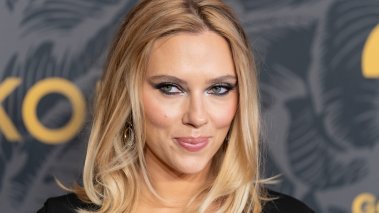
lev radin / Shutterstock.com
Actress Scarlett Johansson accused the company OpenAI of appropriating her voice for ChatGPT’s voice companion called Sky.
Can someone employ a voice actor, or even use artificial intelligence, to copy your voice and then use that audio likeness to sell a service without your permission? And does the First Amendment protect the copycats?
That’s what actress Scarlett Johansson alleged happened in May 2024 when she accused OpenAI of appropriating her voice for ChatGPT’s voice companion called Sky. Following Johansson’s accusation, OpenAI pulled the voice, but CEO Sam Altman denied that Sky was supposed to sound like Johansson. However, he acknowledged asking Johansson to voice the program, which she declined to do.
For some, these conversations might evoke the 2013 film “Her,” wherein the protagonist, played by Joaquin Phoenix, falls in love with a computer voiced by Johansson. Indeed, just one day before OpenAI released Sky, Altman posted the word “her” to X.

While OpenAI employed a voice actor to allegedly imitate Johansson, future generative artificial intelligence could be able to do so without any human samples.
A remote corner of intellectual property law — the right of publicity — might provide a remedy in those cases.
The right of publicity allows people to sue entities that appropriate their voice for profit. Just as someone can trademark a distinctive logo, the right of publicity allows people to protect their distinctive likenesses — including their voices. Ultimately, Johansson has yet to sue OpenAI, but her potential case illustrates how plaintiffs might take action against companies for appropriating their voices whether through voice actors, or even through AI-generated models.
But the right of publicity does not merely apply to voice appropriation. In the most classic cases, it can protect against pictures, drawings, or other depictions of celebrities’ images from appearing in products or advertisements. It can protect college athletes whose images are appropriated for video games. The right of publicity can also protect performers against appropriation of unique audiovisual aspects of their performance, either by other performers, or through unauthorized broadcasting of their performance. Yet the right also has its limitations, and may not apply where similarities are broad or outweighed by transformative aspects of the new work.
This article will explain the relevant law, working through Johansson’s case to demonstrate the right of publicity’s reach and the types of arguments plaintiffs might make to win their cases.
The right of publicity
Black’s Law Dictionary defines the right of publicity as the “right to control the use of one’s own name, picture, or likeness and to prevent another from using it for commercial benefit without one’s consent.”
To establish the right of publicity, plaintiffs must show that:
- the plaintiff is identifiable;
- the appropriating entity gained a commercial advantage from the use;
- the use was unauthorized;
- the use caused the plaintiff monetary harm.
This explainer will highlight California law and legal precedents established by the U.S. Court of Appeals for the Ninth Circuit because California is where many celebrities assert the right of publicity and therefore has the most developed body of law. As we will see below, California and the Ninth Circuit differ in some important ways from other jurisdictions.
When is a voice identifiable?
For starters, what does it mean that a voice is “identifiable”?
Especially for actors and musicians, voice is as much a part of someone’s celebrity as any other personal characteristic. Even casual fans of Bob Dylan, Axl Rose, or Snoop Dogg are readily able to identify songs based on nothing more than an utterance of their voice. Or as the Ninth Circuit explained in Midler v. Ford Motor Co., “a voice is as distinctive and personal as a face.”
In Midler, the automobile company Ford asked singer and actor Bette Midler to lend her voice to a song — one of her own — for a commercial. But Midler declined, so Ford hired one of her backup singers to voice the part instead and instructed the singer to imitate Midler’s voice. In its ruling, the Ninth Circuit held that Midler’s voice alone could establish her identity, and she ultimately won the case.
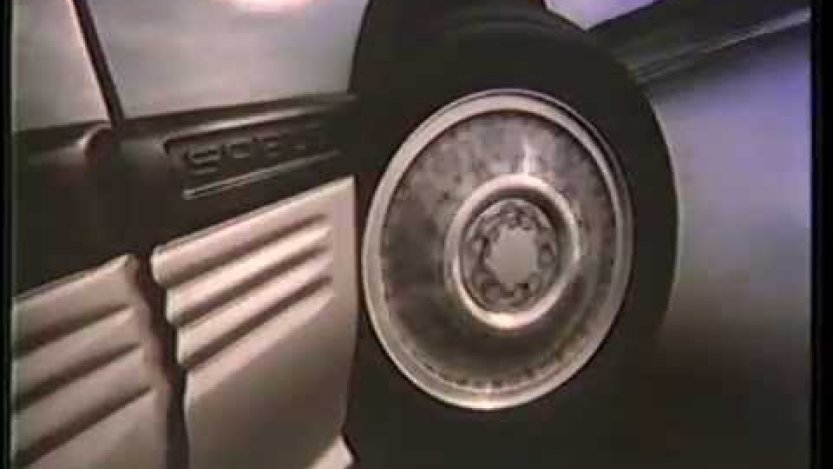
Under precedents set by the Ninth Circuit, someone’s voice is identifiable if it is distinctive and widely known. For example, in Waits v. Frito-Lay, Inc., singer Tom Waits successfully sued Frito-Lay for imitating his raspy voice in a Doritos commercial. The Ninth Circuit held that Waits’ raspiness was distinctive. However, other qualities, like an accent or a particular pitch, might also be sufficient. The singer-plaintiffs in both Midler and Waits were recognizable public figures and therefore “widely known,” but there is no hard test.
Voice imitation does not defeat the identifiability test because the right of publicity protects against the appropriation of likeness, not merely against literal copying. Frito-Lay and Ford did not sample or secretly record Waits or Midler. However, by using voice actors to imitate them, Ford and Frito-Lay employed their likenesses and lost.
NCAA Student-Athlete Name & Likeness Licensing Litigation also illustrates the point. When video game creators animated prominent NCAA football players, the creators altered details like the jersey numbers. The animated players, by definition, were not literal depictions of the players, but the U.S. District Court for the Northern District of California held that the players were identifiable because the public could still discern that the animated players represented actual people.
When is a voice distinctive and widely known?
On the most basic level, Johansson needs to prove that Sky sounds like her. A jury makes these subjective decisions. However, on a motion to dismiss, the court must determine if Johansson’s voice is similar enough to continue.
To surmount that initial hurdle, Johansson must show that her voice has some unique quality. Johansson can more easily establish that her voice is widely known. She is the top-grossing actress of all time, and stars in numerous films and commercials. Because she is likely even more popular than Midler or Waits, she can likely establish that her voice is identifiable.
The Supreme Court has yet to resolve these differences, but AI-generated or other voice copying cases might push the Court in that direction.
OpenAI might point out that it hired a voice actor. Indeed, it did not sample Johansson’s voice, or as some have suggested, create an AI rendering of it. But this does not matter, as Waits and Midler both establish that imitation does not preclude identifiability.
If Sky sounds like Johansson, and Johansson is sufficiently recognizable on her own, then she may meet the identifiability requirements.
How can you prove commercial advantage?
The idea behind the right of publicity is that one’s image is intellectual property. Accordingly, someone’s likeness must have monetary value to receive protection. Plaintiffs must therefore show that the defendant appropriated their likeness for commercial advantage.
A defendant gains a commercial advantage when it appropriates the plaintiff’s likeness in an advertisement or in a product itself. For example, California’s right of publicity statute applies to “any person who knowingly uses another’s name, voice, signature, photograph, or likeness, in any manner, on or in products . . . for purposes of advertising or selling.”
Under normal circumstances, the celebrity would film an advertisement for the company, selling their product in return for monetary gain. Or the celebrity would license their likeness for the product. But when the celebrity is cut out of the equation, and their likeness used without their consent, then the company is basically using a person to sell a product against their wishes, which is especially important if that person does not like or want to be associated with the project.
Thus, OpenAI’s alleged use of Johansson’s voice was likely for a commercial advantage. Johansson’s voice might draw users to subscribe to ChatGPT. Users might be fans of the movie “Her” like Sam Altman. They might be Johansson fans. At very least, Johansson would benefit from indicating that she is the top grossing actress of all time, so her perceived endorsement of ChatGPT would likely help OpenAI sell subscriptions.
Johansson might also point out that OpenAI courted her for the role, an acknowledgment of the value she would bring to the product. Johansson could argue that when Altman could not employ the real “Her,” he pivoted to copying to gain the commercial advantage without having to compensate Johansson.
Was using Johansson’s voice unauthorized and did it result in monetary harm?
The “unauthorized” element is simple: if the plaintiff did not consent to the use, the use is unauthorized. This is a question of fact for the jury. Both OpenAI and Johansson admitted that she did not consent to the use.
Similarly, the “harm” prong is straightforward: it asks how much money the plaintiff stood to gain under proper licensing. This would require calculating how much money OpenAI made from Sky before pulling the voice.
Potential defenses against right of publicity
Is the use transformative?
Fair use doctrine, shaped by free expression prerogatives, might help companies defend right of publicity claims. In analyzing these defenses, like in other areas of intellectual property law, courts weigh free expression principles against property interests.
First, there is transformative use. Sometimes referred to as “expressive use,” this question is qualitative, not quantitative. Transformative use requires showing that the defendant’s work alters the “raw materials” of someone’s likeness. But how much altering is enough? The defendant must transform the original until it becomes, as the Supreme Court of California held in Comedy III Productions, Inc. v. Gary Saderup, Inc., the defendant’s “own expression.” In other words, it must become the expression of something other than the celebrity’s likeness.
If a court finds that Sky sounds like Johansson, OpenAI will have a challenging time arguing that Sky transforms Johansson’s voice. OpenAI did nothing to alter the sound of Johansson’s voice, which are Sky’s “raw materials.”
OpenAI would therefore have to argue that context transforms the use. Unlike Midler and Waits, where Ford and Frito-Lay copied the plaintiffs in versions of their own songs, Sky does not copy content. Sky merely copies Johansson’s sound. Because Sky reads AI-produced messages in response to users’ unique inquiries, users would never believe that Johansson actually recorded all those messages. Thus, any expressive material Sky “produces” is not Johansson’s, but rather belongs to the makers of the AI.
Yet external context alone — without acting upon the original identity in some non-trivial way — is likely not enough to render a work transformative. Take Hart v. Electronic Arts, Inc., another football video game case (in the U.S. Court of Appeals for the Third Circuit, which employs a similar test to the Ninth). There, the Court held it “improper” to ask whether the unrealistic nature of the game’s non-player animations transformed the entirety of college football. A video game enthusiast could make the players do things they would not normally do on the field — like make a quarterback punt the ball — but because the quarterback still looked like his real-life counterpart, it did not constitute transformative use.
As in both Hart and Comedy III Productions, for OpenAI, it only matters that Sky allegedly sounds like Johansson. The voice’s content, even if user-generated, is extraneous to the analysis. OpenAI is likely incapable of providing any kind of transformative context because it does not know the context — each context is unique to the user, who generates Sky’s responses. So, it is within this narrow, vocal aspect that OpenAI must transform Johansson’s voice.
Does the defendant’s work’s value derive from the artistry or the raw material?
Next, the value of the work must derive from something “other than the fame of the celebrity.” In Comedy III Productions, the California Supreme Court found that the defendant’s charcoal print depiction of the Three Stooges “subordinated” the printer’s artistic skill to a “literal” depiction of the Stooges. The defendant artist’s depiction was not literal. It was not a color photograph, but the artist took no liberties with the Stooges’ appearances. Accordingly, the print’s value primarily derived from the Stooges’ likenesses.
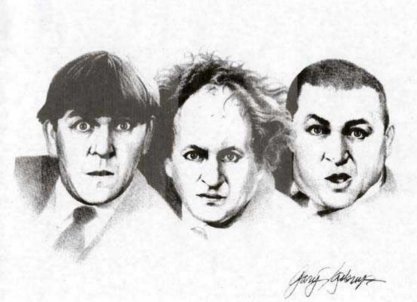
OpenAI’s stronger transformative work defense is that Sky’s economic value does not derive from the raw material of Johansson’s voice.
Rather, Sky’s value lies in the actual service provided, that is, the voice’s ability to interact with users. Sky would possess that value regardless of whether it sounded like Johansson or not. This question is like the “commercial advantage” test above, but here, the defendant must carry the burden of showing that it does not, in fact, derive commercial advantage from the appropriated likeness. To accomplish this, the defendant must affirmatively show that the work’s artistic qualities communicate its value.
Will AI kill the video stars?
The right of publicity presents several unresolved questions.
A key issue is the right of publicity’s scope. For instance, in Rogers v. Grimaldi, the U.S. Court of Appeals for the Second Circuit limited New York’s right of publicity only to advertising. However, as discussed above, the Ninth Circuit in Comedy III extended it to non-advertising contexts, emphasizing economic interests.
Another contentious area is the duration of the right. Some jurisdictions, like California, recognize post-mortem rights extending decades after death, while others, like New York, limit the right to the individual’s lifetime. This inconsistency creates uncertainty for estates and heirs.
Lastly, different courts have employed various tests for free speech-based defenses. These tests are borrowed from other areas of intellectual property law, like the Copyright fair use statute. For example, while the Third and Ninth Circuits employ a transformative use test, discussed above, the Eighth Circuit’s “predominant use” tests ask if the primary use of the person’s likeness is to exploit the commercial value of that likeness. Different still, the Fifth and Sixth Circuits employ the “Rogers Test” which asks if the likeness is artistically relevant to the underlying work. For example, one jurisdiction might protect a company’s use of a competitor CEO’s voice in an advertising campaign, but another might not.
Essentially, then, expressive fair use protections vary wildly across jurisdictions for artists, companies, and others who wish to depict celebrities in their work.
The Supreme Court has yet to resolve these differences, but AI-generated or other voice copying cases might push the Court in that direction.
Recent Articles
FIRE’s award-winning Newsdesk covers the free speech news you need to stay informed.
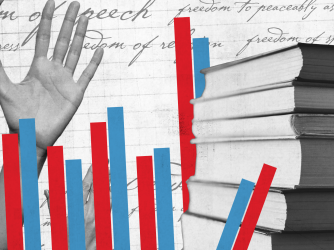
Poll: Majority of Americans believe First Amendment goes TOO FAR in the rights it guarantees
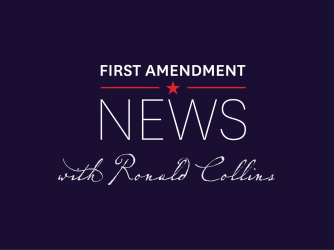
Clement and Murphy ask high court to overrule Hill v. Colorado . . . but will the petition be granted? — First Amendment News 433
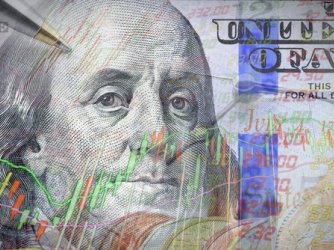
How the US economy is bolstered by the free marketplace of ideas


